Spelling of this surname has changed over the last 150 years or so, going through Rea, Ray and even Raey; a common occurrence as few working class people could write or spell, a decision on spelling probably settled by what parish clerks ‘heard’ and recorded at the time of baptism. The name is largely seen across a narrow section of England, from Workington in West Cumberland, across to Newcastle and Durham in the east. Pronunciation also varies from area to area, varing from Ree, through Rear to Ray. Family readers will note the continued re-cycling of common Christian names. Until recent times this was a common practice in many areas. One just has to be careful which generation is being referred to!
This is a history of the Reay family, latterly of Scotforth, Lancaster, started by David Reay in the 1980’s. This was prompted when David’s father, Walter Reay, made what seemed to be a surprising statement – that he had no idea who his paternal grandparents were!
The limit of his knowledge was that early members of the family were believed to have been born in the vicinity of Keswick and Workington, Cumberland, where James Reay and his wife Annie Mary (Dent) had met and married. The first of their children were born in Keswick. They later moved south to Lancashire, to Scotforth, where the family growing to ten children, were born and brought up at ‘The Forge’ then standing on the site of the Unitarian Church, Scotforth, (more recently, the Rowley Court Masonic Hall), on the A6 road, on the south side of Lancaster. He was known as ‘Pop’ to his children, and ‘Jim’ to his wife. She was always ‘Annie Mary’.
On initial research amongst Walter’s siblings, it soon became apparent that they were similarly in the dark about James’s forebears, although information on Annie Mary’s family was a little more forthcoming. This appears on another page.
My own earliest recollection are of going back to what I assumed was my old family roots on one of many family trips in the car (my father was the first in our road with a new post war car, a Triumph Mayflower, powder blue, OTB 158.) These trips invariably took us up into the Lake District and one trip in particular was with ‘grandpop’ which took us to the area of Cockermouth and Workington. Somewhere in that area we got out to explore a small village with its blacksmith’s smithy on the side of the road. My late brother Jeffrey and I found a disused railway line more interesting, and ran along the tracks in a shallow cutting at the other side of the road, playing trains on one of the myriad of lines built to connect the many mines in West Cumberland. (Pre Beeching.) I have a vague recollection that this was Grandpops’ old stamping ground but I cannot be sure where it was, but one possibility is Ullock.
The one constant theme was that his background was as a blacksmith from the north ‘Lakes’; with Cockermouth, Keswick, and Workington, all being a thread through his early life. More than one relative believed that he had been born at Spennymoor, County Durham, and that there were other connections with that area. All seemed to point to him being part of that large clan of Reay’s that have stretched across the north of England from West Cumberland to Tyneside for hundreds of years.
Well, yes; and no!
This ‘history’ of the family has taken considerable time to arrive at this level and has involved enquiries amongst almost all the known family, some unfortunately no-longer with us, in particular, my father Walter Reay. He would have laughed his socks off if he had lived to hear the ‘punch line’: but all will be revealed. (Well, most of it!)
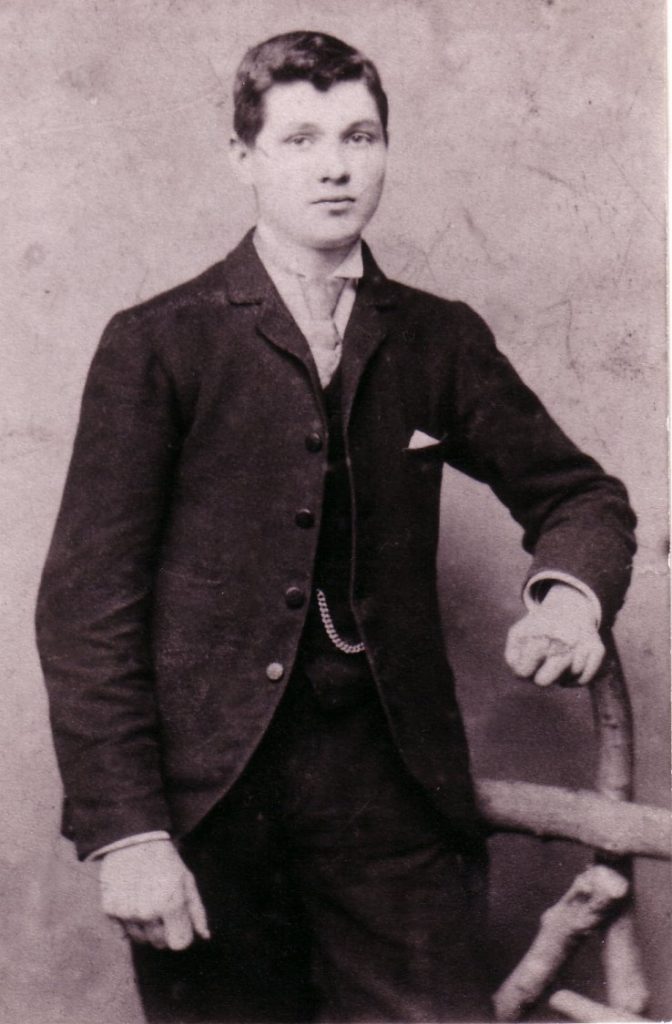
Family lore has it that, in his youth ‘Pop’ visited the ‘hiring fairs’ at Cockermouth and other community’s in the area, where he was known for playing the fiddle in a band. No doubt it was at some ‘jig’ he and Annie Mary met; both apparently being avid cyclists as was the vogue of the period.
What is indisputable is that on the 16th January 1904, James Reay, aged 23 years, a Blacksmith, married Annie Mary Dent aged 20 years, at the Parish Church of St John, Keswick. Witnesses at the ceremony were William Reay, one of Pop’s brothers, and Leah Woodend, Annie Mary’s sister-in-law. ‘Mar Cert, DAR
They appear to have lived initially at Annie Mary’s parent’s home over their shop at 14 Station Street, Keswick, where later that same year, son Harry was born. In 1911, Harry attended St John’s Infant School, along with his cousin Frank Mawson (see later). FMP: National School Admission Registers. On leaving school Harry initially worked in the quarries around Whinlatter to the west of Keswick, and later on the railway. Unlike the rest of ‘Pops’ family who moved south to Lancaster about 1910, Harry remained in the Keswick area for some time. In July 1926 he married Jessie Hay King of Whitehaven at St John’s Church, Keswick. The first of Harry’s children was born in Keswick, with succeeding children born in Morecambe where he worked on the railways at Heysham Harbour. Harry died in Morecambe in 1973. Jessie lived on in West End Rd, Morecambe until January 2006.
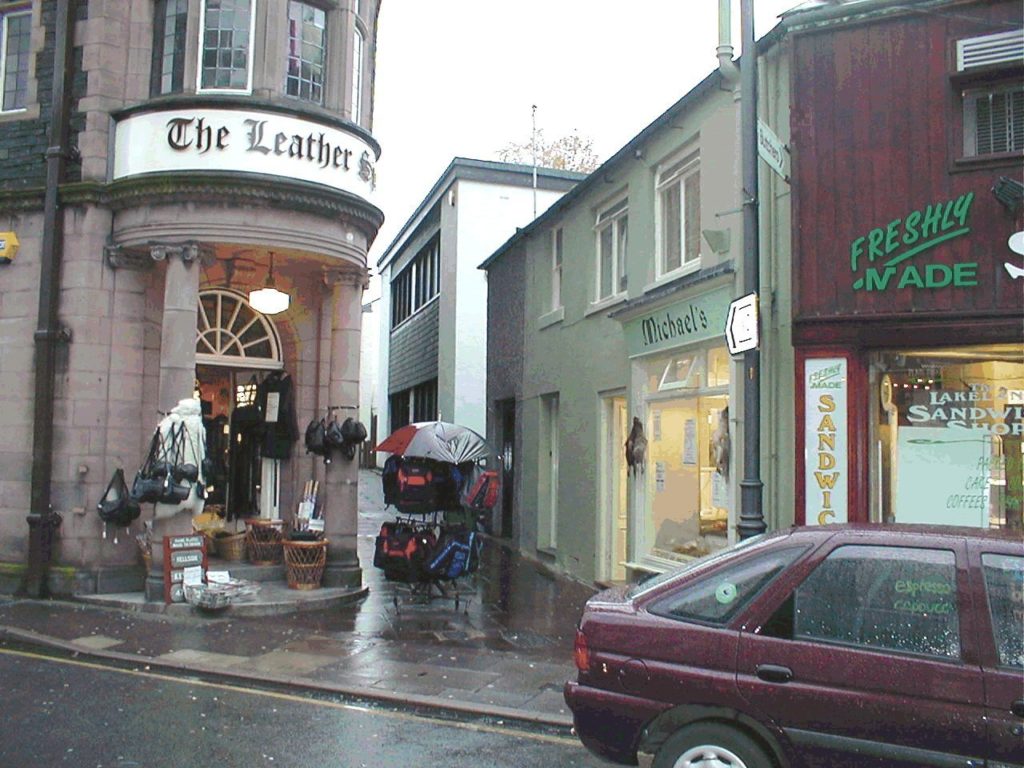
In succeeding years there were further children born in or around Keswick: Annie Isabel born in October 1905 at 4 Wickhams Court, off Lake Road. Jessie in November 1906 and James Harold in November 1907. Winifred Elizabeth was born in February 1909 by which time the family had moved to Portinscale outside Keswick, after a period at Millbeck.
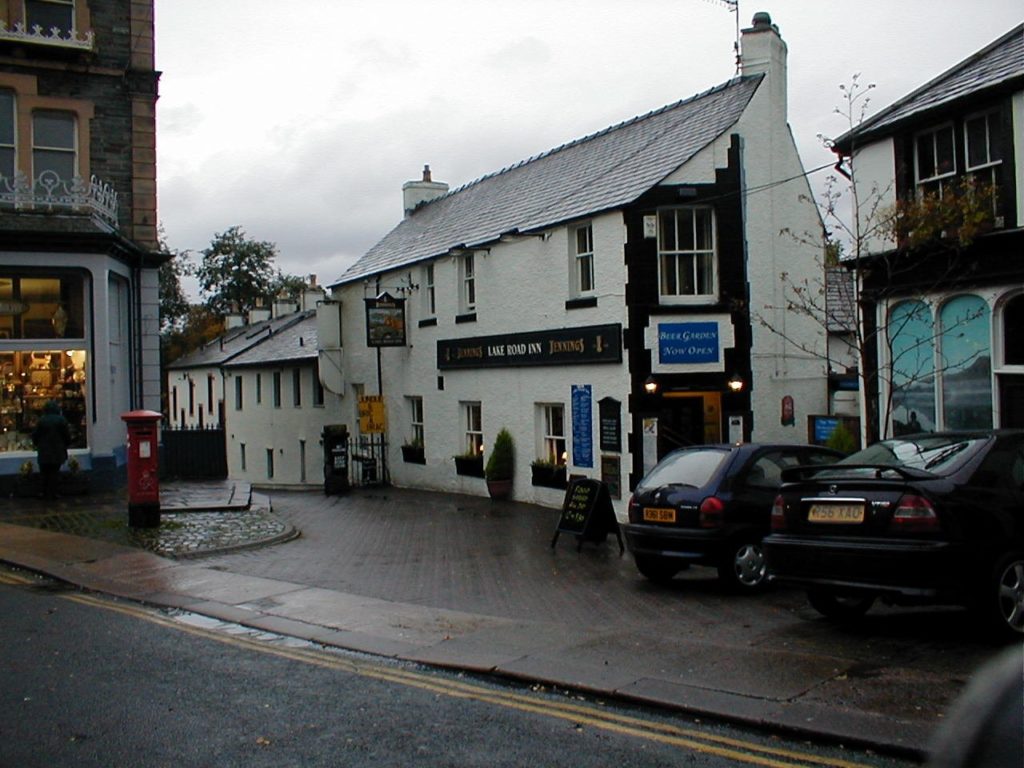
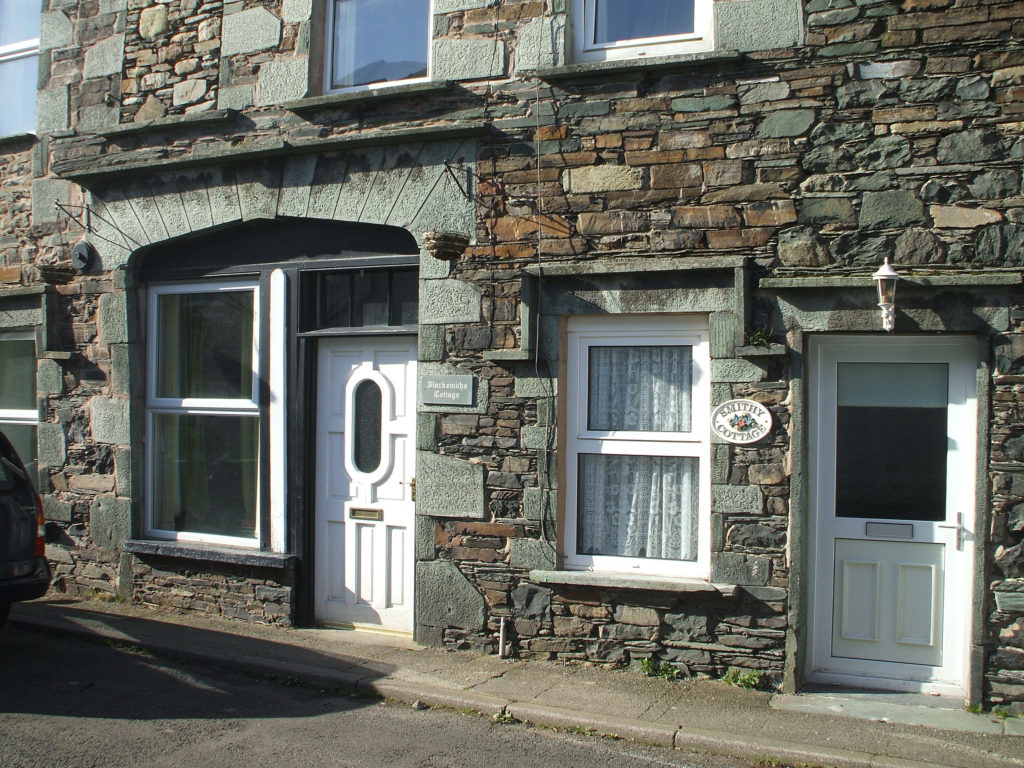
Pop is believed to have served his apprenticeship with the Birkett family of Blacksmiths and, about 1910, having become dissatisfied with the working arrangements at Portinscale, and seeing an ‘opportunity’ advertised in the papers, travelled south to Lancaster to work at the Dixon’s Smithy, opposite the Boot & Shoe public house at Scotforth. (source WR). {Possibly this; Lancashire Evening Post, 16 May 1910, “Village Smithy, as going concern, good connections, no opposition; will stay a week with purchaser. K55 Daily Post Office, Preston.”

James Dixon’s name was on the door, although Mrs Dixon appears to have been running the business, her husband rumoured to be suffering from the ‘bottle’. However, a recent search of available records has established that James died in December 1903 of TB, aged just 36 years, Q4 1903 Lanc’ 8E 532. and Mrs Dixon is shown to be a ‘widow’ in the 1911 census. Further, Mrs Dixon continued ‘in charge’ of the business for a further few years, as – “Wanted”, Youth Wanted: Blacksmith and Shoeing; About 16 – Apply, Dixon, Scotforth Smithy, Lancaster., [Lancashire Evening Post, 6 & 7 October 1914.], and a little later – “For Sale”, Crossley Gas Engine. 7hp, also Screwing Machine, – Dixon, Scotforth, Lancaster: [Lancashire Evening Post 17 April 1916.]
The origins of the smithy are uncertain, but an item in the Lancaster Gazette of the 7th May 1881 indicate ‘The plan of a smithy at Scotforth was approved.’ This seems a little late for the start of a smithy, but examination of the Tithes map of 1843 of Scotforth (plot 20) indicates that the building later known as the smithy, was at that time a ‘joiners workshop’, so possibly the owner ‘extended’ his business.
On the 22nd February 1912, my father, Walter Reay was born at 10 Hala Road, Scotforth where the family were living just a few yards away, across the road from the Smithy.
George Cecil and Susan (Peggy) followed in 1914 and 1915 respectively, with Douglas (Dougie) Charles being born in December 1918, and finally Patricia in September 1923. These later children being born after the family moved into the house attached to the Smithy (according to letters, usually referred to as ‘The Forge’.)
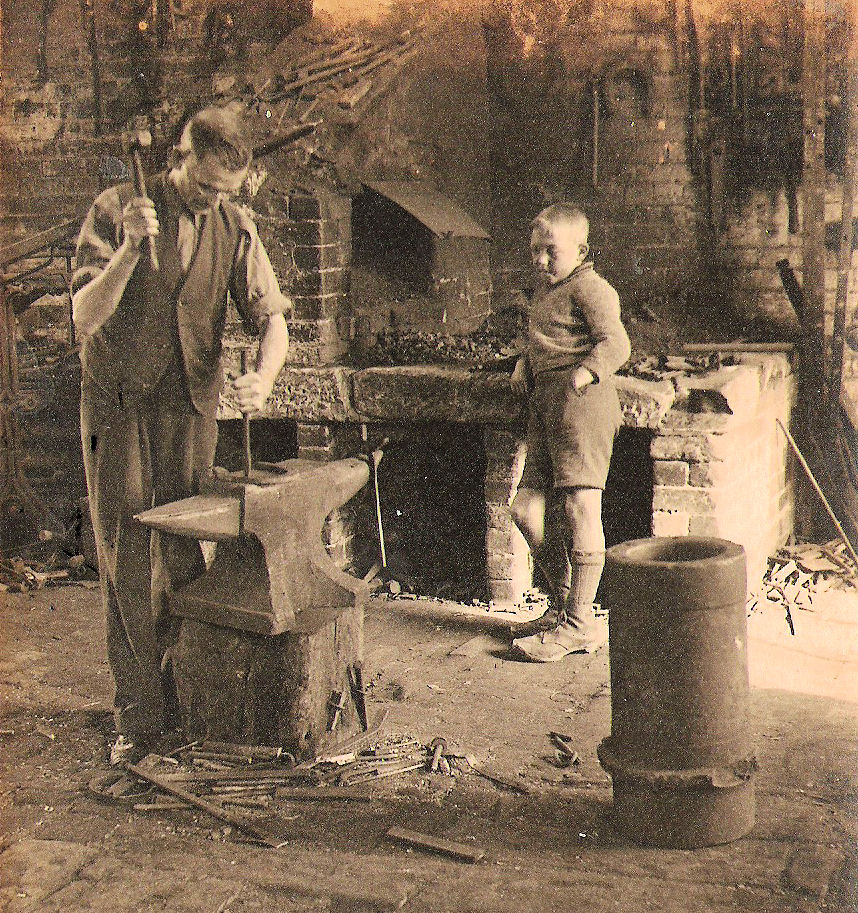
James Reay’s name first appears as ‘Blacksmith, Scotforth’ in Kelly’s Directory of 1918. A ‘Bill Head’ in the family’s possession describes James as ‘Black and White Smith & Horse Shoer’. He had a broad range of skills. The author recalls the smithy of the late 1940’s and early 1950’s, somewhat reduced in size from the earlier barn like structure, but still containing it’s forge hearth, bellows, tall pedestal drill and simple wide bed lathe, the machinery powered by an overhead line shaft. On the lathe, ‘Pop’ would mount the blade sets of rotary lawn mowers for sharpening. Son’s Walter, Dougie and George each related stories of; on returning home from school, they would often be enrolled into building fires in the outdoor wheel pit, to assist ‘Pop’ heating up steel tyres for shrinking onto large wooden cart wheels, being made or repaired for local farmers and trades folk.

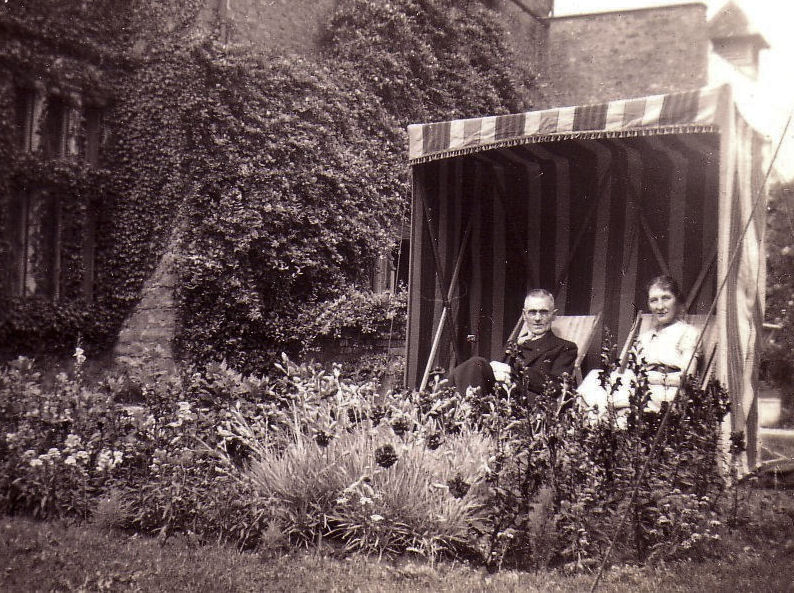
Here, Annie Mary and Pop lived until shortly before their deaths, Pop in December 1962 in his 82nd year, and Annie Mary in 1974 aged 89 years.
Isobel was born in October 1905 at Keswick. She married Gordon Webster in 1928 in Lancaster. For many years together they ran Webster’s Hardware Store in Brock St, Lancaster, with the flat over the shop hosting a variety of family gatherings, both short term and long term, whilst Isobel and Gordon lived in a colonial style bungalow (Skelmorlie) at Quernmore in the countryside to the east of Lancaster. Isobel was deeply involved with the Womens Institute in Quernmore, eventually to become the local ‘Chair Woman’. In discussions with her in later life, Isobel told me that she recalled the family living at a cottage near Millbeck, Keswick, but believed it had since been demolished. She also recalled going to a large family event in Workington when she would have been about 4 years old, possibly a funeral. Apparently there was lots of grown ups there, but Isobel went out to play in the nearby streets. She must have been away from the house for some time as a search party was sent out to find her, with a ‘bell man’ raising the hue and cry until she was found. Isobel also recalled going to stay with her uncle, George Reay, at his pub in Leeds whilst she was still a child. I haven’t established if she travelled ‘solo’, or if was this a general family holiday? Daughter, Pamela was born in 1933. Isobel died in 1994 at Lancaster.
Jessie, another native of Keswick, was born there in November 1906. In 1931 at Lancaster, she married Harold Taylor, an engineer, Harold rose in the ranks of his profession, attaining A.M.I.Mech.E.. He worked for Dobson & Barlow of Bolton and later, Simon Carves, Engineers of Stockport. During WW2, Harold was medically exempt from war service, but probably made up for it by being involved in the design and build of engines for Churchill Tanks. After the war, he and Jessie travelled the world where Harold was responsible for the building of factories and mills in India, the Philippines, Cape Town – South Africa, and other exotic sounding places.
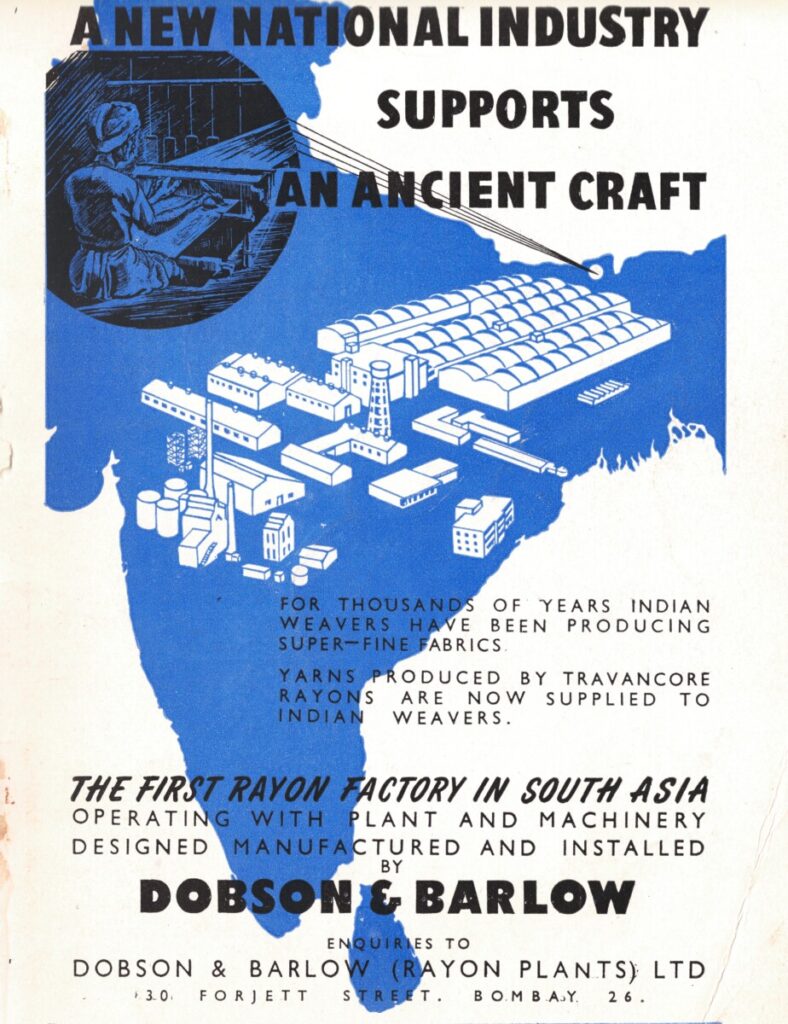
In particular, Harold was Chief Resident Engineer in the building of the first artificial Rayon factory in South Asia, for Travancore Rayons Ltd of Perumbavoor, South West India, now Kerela State. Daughter Anne, born in 1933 in Lancaster, was relegated to boarding schools for much of the time but did spend time in India.. Jessie and Harold retired to Lancaster where Harold died in 1980. Jessie went to live with daughter Anne, then living near Rustenburg, South Africa where she died in 1995.
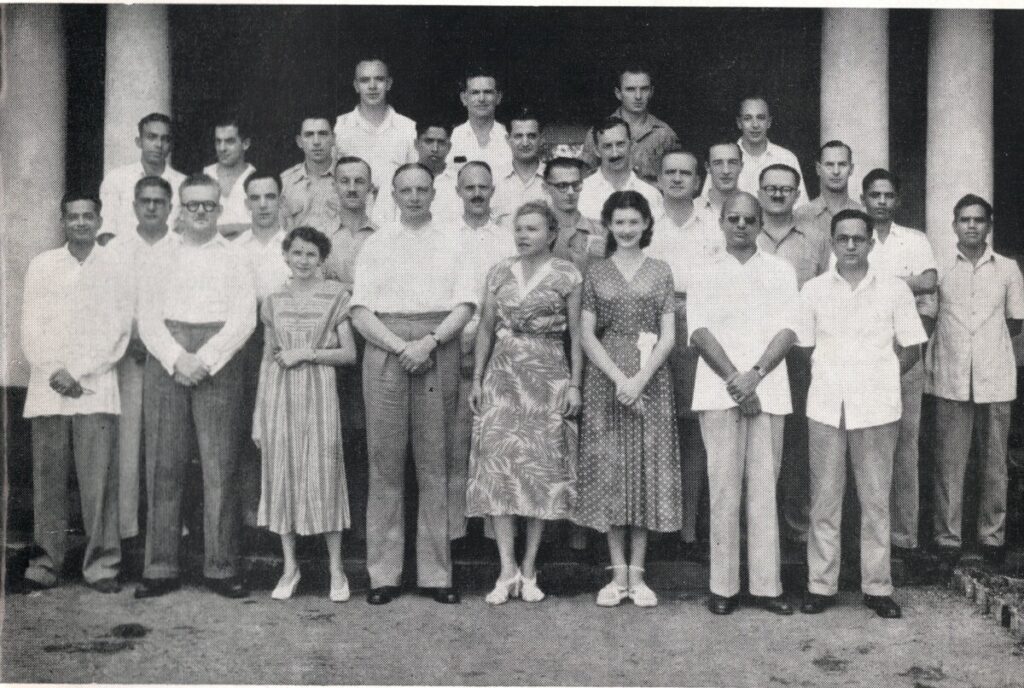

James Harold was born in November 1907 at Keswick. I know little of Harold’s early life, but in 1948 he married Patsy Bishop at Lancaster. Harold, nicknamed Shutler by his siblings, worked as a salesman for ‘Lunesdale Farmers’. He and Patsy, and later, daughter Julia, lived in the flat over ‘Websters Hardware’ store in Brock Street, Lancaster. (See ‘Jessie’ above.)
In the 1950’s, alongside his ‘Lunesdale Farmers’ work, for several years, Harold was Secretary to the ‘Caton Gala’. Several ‘Notices’ inviting tender supplies for the Gala under Harold’s name appear in the Lancaster Guardian archives.

Harold and Patsy later broke up, and in 1970, Harold married school teacher, Dorothy G Davis at Lancaster. They made their home in Morecambe. Harold died in 1982 at Morecambe.
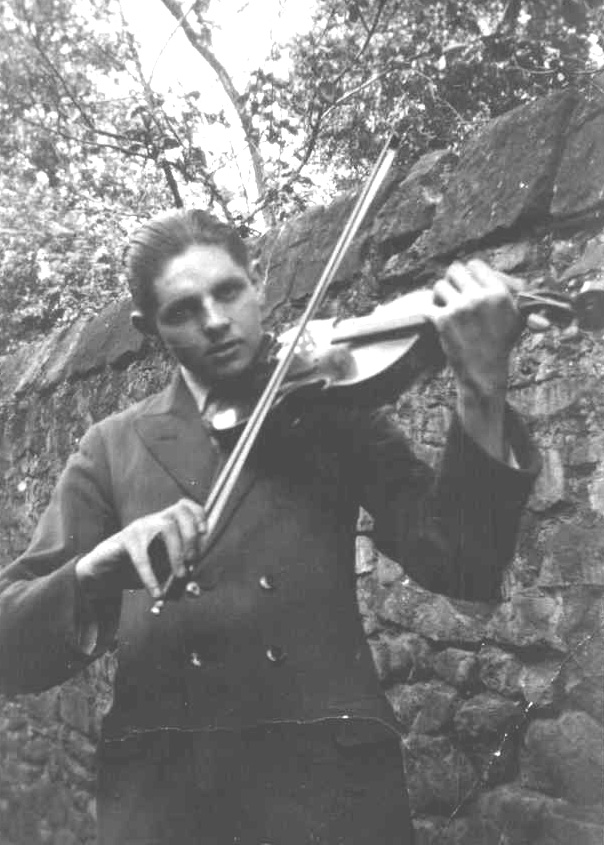
Winifred – Winnie was born at Portinscale, near Keswick, in February 1909, possibly at the cottage attached to the smithy there. Winnie married Frederick William Clow, a native of Sheffield, at Lancaster in 1936. They set up home in Morecambe where Fred was a Printer with local newspaper, The Visitor. Fred joined up near the outbreak of war and served as a Sergeant in the Royal Army Ordnance Corps in Northern France and Belgium, attached to No 1 and No 3 Base Industrial Gas Units. Winnie recalled that before the war, the family had a spell of selling fish & chips from a side door to the ‘Forge’; the only instance of a fish and chip shop in the village to my knowledge.
An advert in the Morecambe Guardian for 26 October 1929 lists, under “Houses for Sale”, “House (now used as a Fried Fish shop), and Smithy adjoining, in Scotforth Road, Scotforth. Apply, Hayton, Solicitor, Sun Street.” It is not known who was the seller, but in any event, there was no change in occupancy at that time. (Ed, Feb 2023.)
Winnie passed away in 1993 at Lancaster, and Fred died in 1997. They had children Barry, Pauline and Stephanie.
My father Walter was the first of the children born after the move to Scotforth, Lancaster, being born in February 1912 at Hala Rd, Scotforth. He recalled he and his brothers being required after school to assist ‘Pop’ in the smithy yard, keeping fires going to heat iron tyres prior to them being shrunk onto wooden cart wheels. This, and other tasks no doubt prepared my father for his life ahead, enabling him to do such tasks as loft conversions (Ashford Road in 1950, before loft conversions were heard of, although I don’t think he had considered ‘insulation’, the place was stifling in summer, bitter in winter!), replace or de-coke car engines, convert petrol driven cars to run on paraffin during post war petrol shortages. Motor bikes were a common thread in the Reay household, with Walter, George and Dougie (see later) all winning cups at trialling events in the 1920’s and 30’s.
Walter saw war service in the Royal Navy, being a Petty Officer, NAAFI Canteen Manager, on Destroyers on North Atlantic convoys, and Mediterranean, and later, Landing Craft (LST 3007) in the campaign to recover Burma, Malaya and Singapore. He had a rapid rise to canteen manager; from initially signing on as a rating, to canteen assistant, then manager, in three days! He worked since leaving school, apart from war service, for a local builders merchant, Robert Gardner, who also had a small fleet of coasting vessels, with Walter becoming responsible for the crew management and customs requirements of the vessels. He later became Manager of the company, as it changed hands through Cawoods, to, what became Keyline Builders Merchants, and also served on the Lancaster Port Commision. He married Muriel (Micky) Passmore in October 1939 at Wray, near Lancaster. They lived on Ashford Road, close to ‘Pop’ and Annie Mary in Scotforth, before joining up with George (below) in building adjoining bungalows on Little Fell Lane at Langthwaite, on the hillside to the east of Lancaster. Son David in later years got involved in this, the genealogy of the greater family, but sadly, younger brothers Jeffrey and Andrew died too early. Jeffrey at age 19 years, and Andrew at 27 years. Walter died in March 1987 at Lancaster, and Muriel passed away in 2008 at Lancaster.
George Cecil, (Bonk, to his siblings) was born in January 1914 at Scotforth. George similarly was inducted into the manual work of the smithy. He served an apprenticeship with a prominent stained glass company in Lancaster and later was involved with Abbotts Stained Glass. At the outbreak of war, he went to Liverpool with brother-in-law, Jack Barrowclough (see later) to sign up with the RAF. But on the recruiting staff realising what George’s trade was, he was instructed to report to an establishment in London where he became responsible for working parties replacing glass in bomb damaged offices and factories. He was allocated a large house near Wembley Stadium which became office and workshops from which he and his staff travelled to and fro into London between raids. I heard it said that some of Georges relatives thought, as he didn’t have a ‘uniform’ he had an ‘easy’ war, but I suspect it was considerably ‘hairier’ than they thought.
George married in 1940, Hilda Germain, a farmer’s daughter, at Galgate near Lancaster. The Germain’s (earlier spelt German) farming families go back several generations, hailing from the Winfell district near Kendal, Westmorland.
George continued in the stained glass business, and made and fitted windows, from village churches to cathedrals, as far away as Bermuda, including trips to Venice to see the Murano glass works there. He also spent several years running a newsagents shop in Manchester. George died in 2013 in Lancaster, and Hilda followed him in the following year. Daughter, Linda lives with husband Murray in Darwin, Australia, after teaching at the university there.
Susan (Peggy) was born in November 1916 at Scotforth, Lancaster. She married John (Jack) Holt Barrowclough in 1940 at Lancaster. His family were descended from mill owners of east Lancashire. Jack served as a mechanic in the RAF during the war, and served with the Air Sea Rescue units. He appears to have been a long time friend of the Reay boy’s, and like them was in to motor cycling and trialling. There are several photographs of ‘the lads’ riding in wintry conditions in such locations as Wrynose Pass in the Lake District, before these roads were tarmaced as they are today.
Lancaster Guardian, 6 Aug 1943. “Flt Sgt R Meadows – Home from the Middle East. A much travelled young man who had been flying out of Malta. En route home on leave, called in at Gibralter where he met John Barrowclough of Scotforth, serving in the RAF, ……. In Algiers, he came across two more Lancaster boys, Eric Cousins, {see later} who recently returned to this country……. (Ed, Feb 2023.)
After the war, and with young son Ian, Peggy and Jack went out to Tanganyika and set up a farm under the UK government sponsored ‘ground nut’ scheme. A family letter from Jack to Walter indicates he was continuing with his mechanic’s skills, servicing caterpillar tractors for neighbouring farmers.
About 1955, relations between Peggy and Jack broke down, and possibly with the added influence of the Mau Mau uprising, Peggy returned with son Ian to the UK. In 1959, Peggy re-married and eventually made her home in Margate; the Queensland Australia one, not Kent! Coincidently (or otherwise!), Jack, who had re-married in Tabora, Tanganyika in about 1963, also made his future home in Queensland, up on the high Atherton Tableland at Mareeba, west of Cairns, at one time running a garage there. Jack died about 1990 in Mareeba. Peggy died in 1993 in Buderim, to the north of Brisbane, Queensland. Their son Ian and wife Irene and family live in the southern suburbs of Brisbane.
Douglas (Dougie) Charles was born in December 1918 by which time the family had moved into ‘The Forge’, the small cottage at the north side of the Smithy on Scotforth Road. Dougie had joined up, before war was declared, along with several other Scotforth ‘lads’, with the local Territorial regiment, The 88 th Field Regiment, Royal Artillery, who used the Drill Hall in Dallas Rd, Lancaster (where now stand the houses of Ushers Meadow.) The regiment comprised part of the British Expeditionary Force which was sent into Belgium at the outbreak of war. Things rapidly deteriorated, resulting in the withdrawal from Dunkirk which Dougie luckily survived, with his detachment hanging on to their lorries until the very last minute, contrary to the reports of many being told to wreck their vehicles (to prevent the enemy making use of them), and make their way to the coast on foot! In September 1941, after a period of training and re-fitting out, the regiment made it’s way up to Gourock, where Dougie was able to make a quick visit to Patterson and McMillan relatives at nearby Wemmys Bay, before boarding the Empress of Canada for Malaya. By October, the ship was off Cape Town where Dougie again was able to visit Taylor relatives.
On the 28 th November 1941, the regiment disembarked at Singapore and started their way up country, but by February 1942 they were back in Singapore, with ‘survivors’, Dougie among them, banged up in Changi jail where he remained until Singapore was relieved. He helped relieve the monotony of many of Changi’s prisoners by performing in several of their theatrical performances, and has a mention, along with several other Scotforth ‘pals’ in Stephen Bull’s book, Lancashire Gunners at War, The 88 th Field Regiment, 1939-1945,.
Dougie and Walter later worked out that at the relief of Singapore, Dougie’s departing Hospital ship, and Walter’s relieving Royal Navy flotilla, passed each other in ‘Singapore Roads’ shipping channel. One of my earliest memories as a child, living on Ashford Road, about 100 yds away from ‘The Forge’, was of some kind of party at the house, with celebrating relatives, not normally seen at our house. In particular, I recall uncle Harold playing darts on a board fixed to the back of the kitchen door; the only occasion I ever remember him visiting our house. It was not until some sixty years later that it became evident that this was an overflow from a celebration at the Boot & Shoe pub at Scotforth to welcome Dougie home after release from a spell in hospital at the end of his imprisonment. In 1949, Dougie married Joan Wakefield. They lived variously at Kendal, Penrith and Slyne, Dougie working in Builders Merchant sales. Joan’s unconventional religious belief’s eventually led to the breakup of the marriage, and in 1976 Dougie married Jean Baldrance nee Savoury at Lancaster.
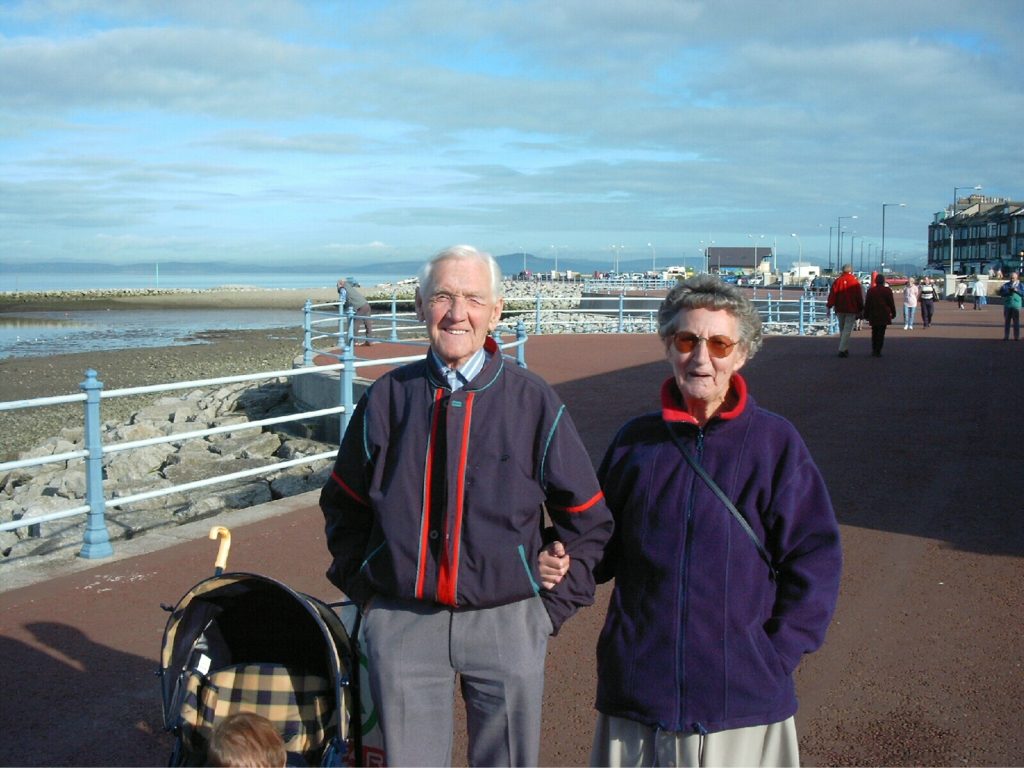
Caravanning was their favourite delight. Dougie’s permanent cheerful demeanour carried him through until his peaceful death in September 2007 at age eighty eight years. “I was never supposed to live this long you know” was one of his regular cheerfully quoted phrases over the preceeding ten years! Jean living in Torrisholme, Morecambe survived him until May 2019.
Patricia, the last of Jim and Annie Mary’s children, was born at “The Forge” in September 1923. In 1943 she married Eric Cousins, son of a local farming family. Eric was a wartime fighter pilot who rose to the rank of Flight Lieutenant. They set up home at ‘Hala Cottage’, to the east of Scotforth, and being fairly close to the ‘hub’, was the location of several family get-togethers, in particular I recall bonfire nights in the hollow field behind the cottage (now filled in and covered by a housing estate.) One year, my father Walter ‘acquired’ some date expired ships flares and distress rockets for the occasion, however, one of the rockets went a bit off course and smashed some slates on the roof of house on Gressingham Drive the other side of the hill. Next year we were reduced to sparklers!
Eric developed a successful race horse training business, in particular, training for businessman Robert Sangster. The family moving first to Barton under Needwood, Staffordshire, and later to Tarporley in Cheshire; with Pat’s able assistance on the social front. ‘Pop’ and Annie Mary were frequent ‘long term’ guest’s, with ‘Pop’ on several occasions, involved in shoeing the horses.. Pat died in 1987 and lies at St Peter’s Churchyard, Delamere. After Pat’s death, Eric spent some time in America, and died in 1996 apparently of an heart attack whilst swimming off Barbados Obit, The Times.1 Feb 1996
Eric’s father, Horace Cousins, owned a dairy and large tract of land adjoining Hala Cottage, where, in the post war years, a housing estate was built with several roads named after racecourses, and is known locally informally as the Racecourse estate. Pat and Eric had children, Simon, Martin, Wendy and Nicholas who still live in and around the Cheshire area.

‘Pop’ and Annie Mary’s time at the Smithy had its difficulties in their later years, with them spending increasing periods staying with various relatives. As ‘merely’ a grandchild, the reasons for these absences from home were not discussed, but a search amongst local newspaper archives recently placed on internet genealogy sites cleared up a sixty year old mystery (to this writer!)
An article in the Morecambe Visitor of 18th March 1959, under the heading of “In Cottage 43 Years, Aged Couple Must Leave” reveals that “79 year old Mr James Reay and his 75 year old wife have to find other accomodation. –” It transpired that James had never actually owned the property of the smithy and the adjacent cottage, having been a tenant, laterly of Hadwin Allen, a car dealer, who in applying before County Court Judge Allan Walmsley QC for possession, stated that he had bought the property in 1947. (Whilst I knew of the name of Hadwin Allen, I never knew where he fitted into my family’s life.) Judge Walmsley apparently had some sympathy for Pop’s predicament, giving a judgement for possession in three months, but ordered there should be no action without his leave. The order was not in fact actioned until July 1960, when Pop and Annie Mary moved to a council house on Ingleton Drive on the ‘new’ Hala Estate. (FindMyPast: Newspaper Archives, Morecambe Visitor, Lancaster Gaurdian.)
Hadwin Allen’s gain was somewhat short lived, as in 1962, Lancaster City Council determined that The Forge cottage, plus others on the corner of Scotforth Road and Ashford Road should be demolished, not solely as being ‘unfit’, but also to improve the ‘sight lines’ for traffic at that junction on the increasingly busy A6.
That brings us up to date with a recent Who’s Who, but who are we is the question! So let us go back…………………………………
or, if baffled already, go back to top.
James’s (Pop’s) birth certificate shows that he was born on the second of March 1880 at Schoose Farm Cottages, Workington, Cumberland. His father was Charles REAY, an Engineman; his mother was Susannah, formerly BELL. Schoose is a large farm, still standing, on the south-eastern outskirts of Workington. It was the manor farm of Workington Hall. At the turn of the 1800’s, John Christian Curwen was a pioneer of modern farming practice. His cropping and husbandry was the subject of then current farming textbooks. The ‘show-ring’ and windmill stump still stand.
On the lane to the south of the farm stand Schoose Farm Cottages, a row of about eight sturdy stone built dwellings, with a further cottage behind, originally provided for the farm workers and an adjacent quarry (now filled in.) From a later census return, it appears that ‘our’ Reay’s’ lived at number 6 Schoose Cottages, although it is difficult today to work out which one would have been number 6 at that time.
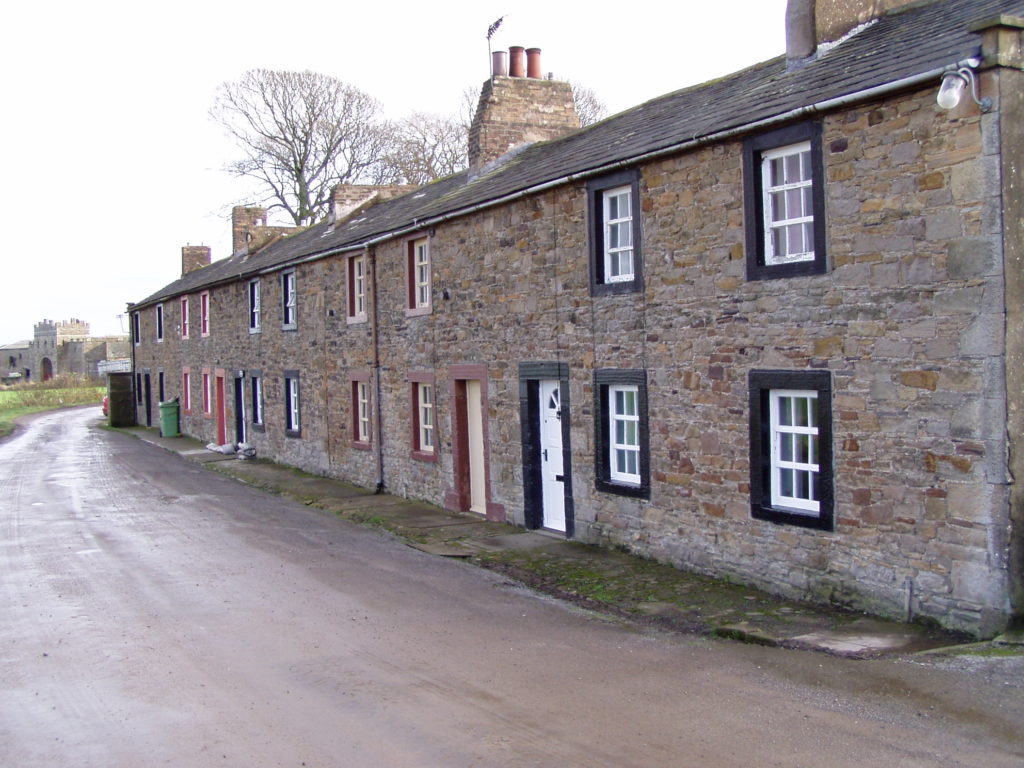
Very fortuitously, 1881, the year following James’s birth was a census year and examination of this, and other records allows us to start to build up a history of ‘Pop’s’ family. RG11/5178 F120 P3
Pop himself was one of eleven known children as follows:-
- John, baptised 6th October 1864 at Camerton.
- David, baptised 2nd February 1867 at Camerton.
- Susannah, baptised 13th April 1868 at Clifton.
- Catherine, born circa 1871,
- George, born 1st March, baptised 25th May 1873 at St John’s Church, Workington.
- Henry, baptised 17th October 1877 at St John’s Church,
- William, baptised 23rd December 1877 at St John’s Church,
- # James, baptised 18th April 1880 at St John’s Church,
Later censuses show further children:-
- Mary Agnes, baptised 23rd February 1882 at St John’s Church,
- Martin, baptised 26th April 1885 at St Johns Church,
- Isabella, born June 1887, baptised 18th September at St John’s Church,
Workington Baptism Records, Carlisle Record Office.
It is not known if father Charles’s employment was directly connected with the farm, or the adjacent quarry, (just to the right of the cottages in the photo; since filled in.) The family later left Schoose and moved in with his mother, brother and sister at 16 King Street, Workington, where in April 1889 Charles died of a long standing stomach ulcer. Death cert, DAR
By 1891 his widow Susannah, probably having ‘lost’ the cottage at Schoose Farm after Charles’s death had taken her children to accommodation in Ladies Walk, Workington. She is said to have taken to her bed, never to get up again. Isobel Webster. She died in May 1893 of Meningitis apparently at the home of a niece Eliza.Death Cert, DAR
Some of the children were still very young (which probably accounts for very little family lore being handed down.) Susannah apparently advised James to get himself work with a blacksmith, “a good settled trade”, and besides, her father was a blacksmith, as we shall see later. The family broke up and apparently went their separate ways.
The following is what has been established for Pop’s siblings.
John, born October 1864 at Camerton, his mothers’ home village on the north side of the River Derwent, east of Workington. On his birth certificate, John’s name is spelt as John RAY. In the 1881 census at Schoose, he is described as a locomotive stoker. In 1901, John is still living at Schoose,CR 1901, but by 1902, he has left Schoose and is living at 19 Park End Road, Workington. Military Papers, Harry Reay, Ancestry So far, I have been unable to locate John after this point, not aided by there being at least two John Ray / Reay’s being born in 1864 in Workington!
David, born 1867 at Clifton, south across the river from Camerton, possibly his parents first home of their own. David, in early 1891 (as David RAY) is a lodger at 1 Fox Street, Workington. An Iron Worker, he married Sarah Oliver, a Domestic Servant at Cockermouth Register Office on 15th August 1891. Their marriage certificate does not give a name for Sarah’s father, and I could find no trace of her name in the preceeding census returns. David and Sarah had a son David Allan Reay born in August 1892 at Branthwaite, Dean. Sadly, father David soon succumbed to the arduous work conditions of the period. He died 13 th September 1892 at 52 King St, Workington of Rheumatism and Heart Disease aged only 25 yrs.
In 1895, Sarah went on to marry a John Weir, a native of Bonny Rigg, Haddington in Scotland, himself a widower, a labourer in a steel works in Workington. Upon this marriage, as Sarah Reay, she gives her father’s name as Alan Lewthwaite – deceased, and records of this family show that they lived in Branthwaite Row, Dean, near Cockermouth. By the time of the 1911 census, David Allan and the Weir family are living at 90 Senhouse St, Workington. He appears to have died in 1926 aged 33 years, possibly having suffered through working as a labourer in a coke oven works.
Susannah, born 1868 at ’Standingstone’, Great Broughton, near Workington. At the time of the break-up of the family, Susannah joined a couple of her siblings and made her way to East Lancashire. She appears in the 1891 census as a domestic servant at the home of Herbert Blight, Chemical Manufacturer, in Hollins Bank, Oswaldtwistle. She married Arthur Crispin Barrett of Preston on 2nd December 1893 at St Peters Church, Accrington, Lancashire, when Susannah was 24. Marr Cert. DAR Arthur, an Iron Turner, although born in Preston, his parents came from Colne and Barrowford in east Lancashire. Susan and Arthur later had children Joseph Stephen Barrett, born 1894 at Pendle Street, Accrington, and Lillian Barrett, born 1903. By 1911 the family were living in Partington Street, Castleton, Rochdale. There are further family connections in east Lancashire later.
Catherine, born 1871 at Workington. Catherine appears to have joined those of her siblings that made there way to East Lancashire, as on 17th January 1900 she married Arthur Crawshaw at Blackburn Parish Church. Marr Cert. DAR. Catherine is shown as a ‘Barmaid’ of 152 Rock Terrace, Dukes Brow, Blackburn, and Arthur, a ‘Carrier’ of 393 Blackburn Road, Accrington, son of Thomas Crawshaw, a local coal merchant who provided a collection and delivery service from Bradley Street canal wharf at Church, on the Leeds – Liverpool Canal. At one time, Thomas had a stable, horses and ‘lurries’ there. “Accrington’s Canal Links” by Mike Clarke By 1901, Catherine (or ‘Kate’) and Arthur have set up home at 13 Bradshaw Street, Accrington. In the 1911 Census they were living at 16 Market St, Church, but sadly, a previous born child has died.
Henry (Harry), born 1875 at Workington. When the family split up, Harry apparently made his way to Carlisle where in August 1894 he signed on as Private 4430 of the 4th Battalion, The Border Regiment. Attestment papers, National Archives, Kew. DAR He served in India with the 2nd Battalion until January 1902, and was then posted to South Africa, returning to the UK in September 1902 when he transferred to the reserve. For his service, he was awarded the Queens South Africa Medal, with two clasps, “Transvaal” and “S. Africa 1902”. . A family story has it that whilst in India, Harry had a dispute with a native servant in the camp kitchen. The servant pulled a knife on him, whereupon Harry ‘defended himself’ putting the servant over the kitchen stove. The servant did not survive! Harry is reputed to have been Court Martialled at Lucknow and received a ‘nominal’ 112 days detention.Robbie Reay As yet I have been unable to trace this incident in the National Archives at Kew. After his discharge from the army, Harry settled in the Durham area and went down the mines.
He rejoined the colours in 1915, and is recorded in the National Archives, Kew, as Acting Sgt. 18/1363 in the 25th Bn, Durham Light Infantry at the age of 39yrs. The ‘burnt’ records are difficult to read (damaged by enemy action in WWII) but he is noted as on the ‘Property List’ of 4 Battery in June 1916. His son Robbie believed that he served for a spell as a Recruiting Sergeant in the Sunderland area. He was transferred to the reserved list in Dec 1917, and then returned to the mines at Mainforth Pit, Ferryhill, County Durham.

Harry married Elizabeth Ann Barton. They had children Harry, Ethel, Jack, Albert, Robert (Robbie), Dolly, Edna and Stanley. Stanley died age 10 years of Diphtheria. Harry died in 1951, his wife Elizabeth in 1963, and they are buried at Ferryhill Cemetery, County Durham.
George, born 1873 at Workington, another ‘emigrant’ to East Lancashire; at the time of the 1901 census, he, with wife Sarah Emma Sayles is recorded as a Beer seller, of the Spread Eagle Inn on Blackburn Road, Accrington, possibly where Catherine and Arthur Crawshaw (above) met! Sarah hailed from Crossland Moor, near Huddersfield. Living with them is George’s sister, Isabel (see below).
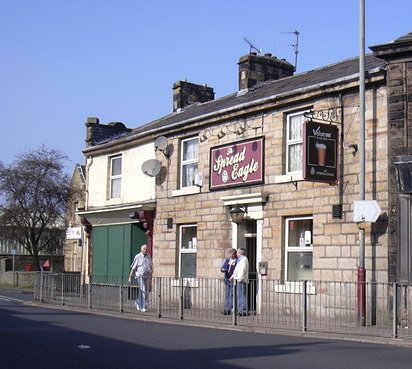
George then appears in a Leeds trade directory in 1911.Leeds City Archives He was described as ‘beer retailer’ at the Nevins Hotel, Goodman Street, Hunslet. By 1913, he had taken over the Moulders Arms at 149-151 Water Lane, Holbeck, Leeds. {an historically important area over the previous 150 years for the production of iron castings used in the manufacture of mine and mill pumping engines: think James Watt and associates; hence Moulders} Sarah sadly died in March 1918 of a Cerebral Thrombosis, but it appears that George really needed a soul mate for his business as in December the same year he married Ada Elizabeth Greenwood, herself a widow aged 40 yrs. Marr Cert. DAR George appears in the trade directory up until his death at the age of 49 in late 1922, when the licencee changes to Ada’s name. Isobel Reay (Webster) remembered visiting there as a child and described George as a well built man who sported an Albert and chain.
In late 1992, I spoke by telephone to an elderly sounding George Reay listed at an address in Harehills, Leeds. I told him I was looking for someone possibly descended from George of the Moulders Arms. There was a long pause, and then he said, “That was my father.” Unfortunately, I could not persuade him to talk further, or respond to my letters. Records show that this George, son of George, was born in Holbeck, Leeds in November 1919. He appears to have worked as a welder. In 1947 he married Emma Louisa Lina Webel, a German lady, who later worked in a bakery. Emma died in 1989 in Leeds. George died in a Leeds Nursing home in October 2015. Death Cert. DAR
William, born 1877 at Workington. William, known as ‘Billy’ to his family, is reputed to have been ‘Pops’ favorite brother, and was in fact a witness at ‘Pops’ wedding. Unlike several of his siblings, William remained for a while in Workington, marrying Elizabeth Ann Lowes.Mar Cert, DAR William was an Iron Worker. Their first child, named William, born in 1904, died in infancy. A second child born in 1906, named Albert, died at age 3 years. Pauline Brooks (Reay)
A son, William Edward was born in Darcy St, Workington in October 1911. By the time of the birth of their next son John Kitchener, the family have moved to Witton Gilbert, near Chester le Street, Co Durham, where ‘Billy’ found work in the mines. William Edward, apparently known as ‘George’ to the family, after briefly working as a miner, joined the Royal Navy as a Boy Entrant in 1927, doing his intial training at HMS Ganges, a shore establishment at Portsmouth. In 1938, at the time of his marriage in Portsmouth to Daisy Wilby, a typist from London, he was a Leading Seaman on HMS Courageous, an aircraft carrier. Whichever ship he was on, it would appear to have been in Malta in April 1939, as Daisy is noted as sailing out from Southampton to Malta on the S.S. Jervis Bay, presumably to meet up with ‘George’ at Valetta. Ancestry: UK Outbound Passenger Lists 1890-1960
HMS Courageous was later sunk by a German Submarine in the Irish Sea in September 1939. The S.S. Jervis Bay later also stood out in the history of WW 2. Shortly after Daisy’s trip on her, she was requisitioned by the Royal Navy, and converted to an armed merchant cruiser. In May 1940, HMS Jervis Bay was the sole escort on a North Altlantic convoy when it was attacked by the German warship ‘Admiral Scheer‘ off Iceland. Jervis Bay’s delaying tactics allowed the convoy to scatter, but she was sunk and many of the crew including the captain, killed. He was later awarded a posthumous VC. Wikipedia, Creative Commons Licence
W.E. Reay was awarded the DSM and Croix de Guerre for action at Narvik. London Gazette. 2nd Supp’ Page 5710, 24 Sept 1940 Sadly, William Edward went down at the sinking of HMS Hood by the German battleship Bismark in May 1941, leaving his wife, Daisy, and baby daughter Janet, born on the day of the sinking.
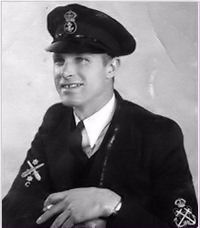
James, born 1880 at Workington. ‘Pop’. See page 1.
Mary Agnes, born in 1882 at Workington. So far, nothing further known of her earlier years until her marriage in Dewsbury, Yorkshire on the 16th May 1908, to Walter Johnson, 37 yrs, a miner. Mar Cert, DAR Mary was by then 25 yrs old, a Woollen Feeder. At the time of the marriage, both were living in Back Cross St, Dewsbury. Walter, and his sister Rhoda, previously lived in Batley, but appear to have been born in Philadelphia, USA, although descended from Yorkshire folk. Paula Littlewood (A change; at this time people seem to emigrate to the USA !) It would appear that Rhoda and Mary were work-mates as Rhoda was also a feeder in a Woollen Mill, probably resulting in the introduction to Walter.
Martin, born 1885 at Workington. Martin apparently also made his way over to the North East; although I have found a reference indicating he spent some time working at a quarry in Freshford, Somerset. CR 1901. RG13/2335 F146 P13 Family members say he was a miner at Waldridge Fell, near Chester le Street. In March 1908 whilst living at Grange Villa, Pelton, he married Adelaide Mary Bell a ‘domestic servant’ of Craghead, at Chester le Street Register Office. (On the marriage certificate Martin gave the name ‘Marcus Darling’ which amused me, possibly an affectation on the ecstatic couples behalf, but it has since transpired that ‘Darling’ was a family name in a previous generation.) They are believed to have had one son, Cyril, born in February 1915 whilst living at Brecon Hill, Little Lumley, Co Durham. Cyril married in September 1940, Vera Gill of Darlington.
A relative believed that Cyril was seriously injured whilst serving as ground crew in the RAF. He survived the injury but never fully recovered from the shock. He died in Winterton Hospital near Sedgfield, Co Durham in January 1982. There may have been a daughter, details yet unknown. What is known is that Vera divorced Cyril and married a Norwegian Air Force mechanic, Leif Egil Gustavsen in November 1944. Marr Cert. DAR
Isabella, born 1887 at Workington. At the time of the 1901 census, she was living with brother George and his wife Sarah at the Spread Eagle Inn, Accrington. At age 13, she was working as a tenter in one of Accrington’s many cotton mills.
I have recently discovered a letter she wrote in 1963 from Grimshaw St, Accrington, to my parents upon the early death of my brother Jeffrey, signing herself ‘Aunt Bella’. She never married. She died in Accrington in 1971. The informant on her death certificate is given as George Frederick Lloyd of Ellesmere Port, nephew. But who was he ?
Previous generation:
As was stated earlier, parents of ‘Pop’ and his siblings (i.e., Walter’s grandparents) were Charles and Susannah. The certificate of their marriage at Cockermouth Register Office in June 1866 shows Charles RAY, 26 years, an Engine driver, marrying Susannah BELL, 24 years. Susannah’s father is shown as George BELL, a Blacksmith. (Hence, ‘a good trade to be in’.) The Bell family were then living in Great Clifton, to the north of Workington but in the census for 1851, George and his family are at the “Smithy” in Sowerby Lane, Carlisle. Further back, his family appear to hail from Kirklinton, north east of Carlisle. (George Bell married Susannah Daily, or Darling, at Moresby Parish Church, Whitehaven, 6 June 1840. Q2 1840 Whitehaven 25-181. 14 year old Martin Darling, younger brother of Susannah, was drowned at the Workington, Jane Pit disaster in July 1837. Q3 1837 Cockermouth 25-59.)
From age dates given on his marriage certificate and CR 1851 HO107/2435 F113 P6 and 1861 census returns, Charles would have been born about 1840, but where has not been established for certain. What has been established is that he was one of nine known children as follows; and their places of birth, as shown on census returns, was at first surprising.
- Mary Jane (REA) born circa 1827 at Newton, County Down, Ireland.
- David born circa 1829 at Newton (ards)
- James born circa 1831 at Gransha
- Henry born circa 1835 in Ireland
- Agnes born circa 1836 at Newton
- Elizabeth born circa 1837 in Ireland
- Hugh born circa 1840 at Newton
- Catherine baptised October 1842 at Ballyskeagh, (*)
- Charles born circa 1842-3 variously given as Holywood or Workington.
Hence the mystery so far as to where Charles was born – Ireland, or
Workington, although I lean toward Ireland as no record has been found ‘this side of the water’ of his birth, and records (if any) do not generally occur in Ireland until a later period. The 1840’s was the period of the potato famine, although it’s effect in Co Down was not as severe as more southern parts of Ireland, it created a period of mass emigration from Ireland. As ‘merely’ another part of the United Kingdom, no records were kept of the movement of people between Ireland and England such as may have been the case between Ireland and America.
It is assumed that the family came across to Cumberland in the mid 1840’s as they do not appear in the 1841 census in England. The 1851 census shows the whole family, twelve in number, including mother-in-law, living under one roof at The Row, Workington, which lay at the south end of the present day Park End Road, near the Fire Station.
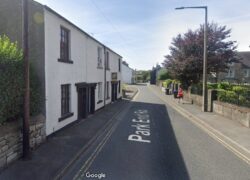
This was a boom time in Workington, with the opening of new mines, the building of the harbour and a myriad of railways connecting the industry and ports in Cumberland and down to Barrow in (the then) Lancashire.
Their parents were David Rea (another one!) and Catherine McCORMICK.
This David was born about 1798 / 1801 at Dundonald, County Down, and Catherine was born about 1810 at Comber, also in that pleasant rolling countryside to the east of Belfast.
Records of the period are difficult to come by, but more are constantly coming to light. The family is believed to have been of Presbyterian denomination. The only substantiated record so far traced is that of the baptism on the 1st of October 1842 of their daughter (*) Catherine Rea. The family were then living at Ballyskeagh, a few miles north west of Newtownards, and within site of Scrabo Tower.
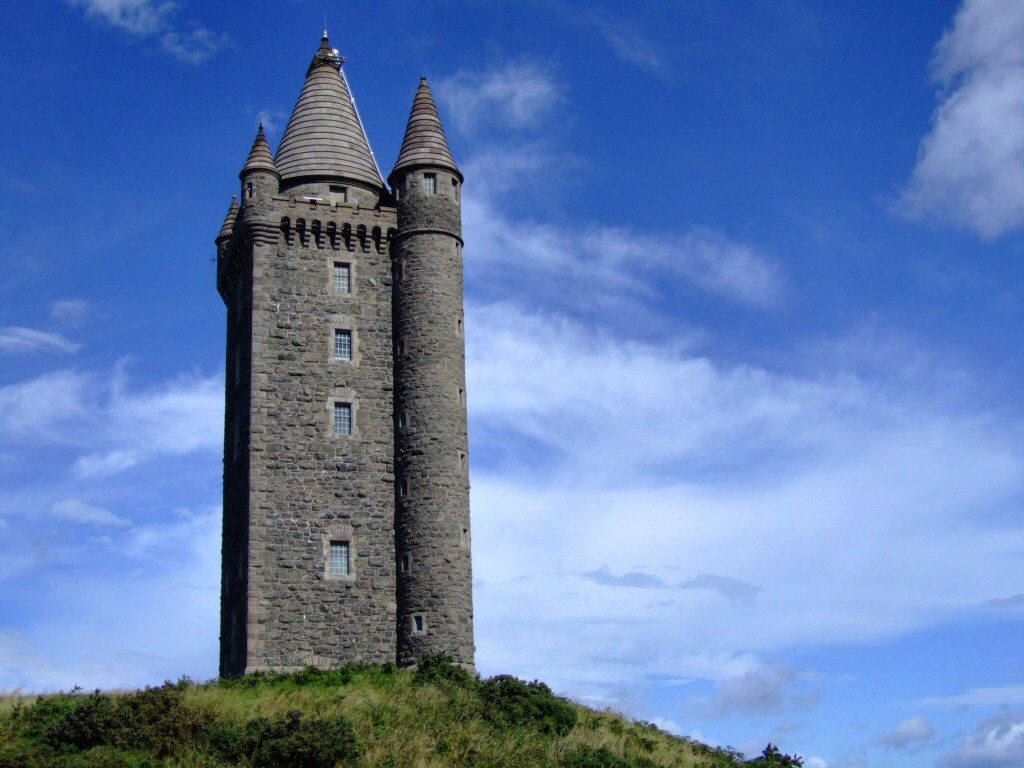
-or so I originally thought. It turns out that the tower wasn’t built until 1857, as a monument to the 3rd Marquis of Londonderry who died in 1854; but it’s a nice picture.
The night of the 6 / 7th of January 1839 was known as the ‘Night of the Big Wind’ with extensive damage across Ireland. In the Comber region, windmills had their caps blown off; one in particular causing severe damage, apart from to the mill, the head cap blew over onto the roof of a new church just being constructed, putting back it’s opening by twelve months. The 1840’s were a difficult period for the Irish. In Down, the potato crop of 1845 was damaged by disease, with that of 1846 almost totally destroyed. Less known is that shortages were not limited to potato, but also wheat, barley and oats producing very poor crops for several years.
Numbers entering the workhouse in Newtonards between October 1846 and January 1847 doubled, and doubled again to July 1847. In February 1847, a soup kitchen was set up in Comber. To add to their woes, in 1849 there was an outbreak of Cholera in Comber. Comber Historical Society.
Comber is situated near the confluence of the rivers Glen and Enler. There was a pier which enabled boats to access the town from Strangford Lough. One of the cargo’s brought in was coal. Could this be a route by which the Rea family got away to Cumberland?
The search for information continues, intermittently, with contact having
been made with other people researching Rea’s (of any spelling) stretching from London to Vancouver.
The punch line?….. well, those that knew him probably recall my father Walter regularly mimicking the Belfast accent – in a friendly manner, “What’s yer tar?” , (What is your tare weight?) was a favourite one, mimicking ‘Albert’, an Ulsterman, a loader and crane driver of Robert Gardner’s, working at Marsh Point on the Quay at Lancaster.
But he didn’t know……. Did he?
Family Tree of our Workington, Lancaster and Keswick Reay’s
| David Rea(y) | Catherine McCormick | |||||||||
| born circa 1799 Dundonald, Co Down. | mar ? | born circa 1810 Comber, Co Down. | ||||||||
| | | ||||||||||
| Mary Jane | David | James | Henry | Agnes | Elizabeth | Charles | Hugh | Catherine | ||
| 1827 - 1913 | 1829 - 1864 | 1831 - 1833 | 1833 - 1893 | 1836 - 1888 | 1837 - 1865 | 1839 - 1889 | 1840 - 1851 | 1842 - ? | ||
| | | ||||||||||
| mar 1866 | ||||||||||
| Susannah Bell | ||||||||||
| | | ||||||||||
| John | David | Susannah | Catherine | George | Henry | William | James | Mary Agnes | Martin | Isabella |
| 1864 - ? | 1867 - 1892 | 1868 - 1932 | 1870 - 1944 | 1873 - 1922 | 1875 - 1951 | 1877 - 1946 | 1880 - 1962 | 1882 - 1959 | 1885 - 1959 | 1877 - 1971 |
| | | ||||||||||
| mar 1904 | ||||||||||
| Annie Mary Dent | ||||||||||
| | | ||||||||||
| Harry | Isobel | Jessie | Harold | Winifred | Walter | George | Susan | Douglas | Patricia | |
| 1904 - 1973 | 1905 - 1995 | 1906 - 1996 | 1907 - 1982 | 1909 - 1993 | 1912 - 1987 | 1914 - 2013 | 1915 - 1993 | 1918 - 2007 | 1923 - 1987 | |
| | | ||||||||||
| mar 1939 | ||||||||||
| Muriel Passmore | ||||||||||
| | | ||||||||||
| David A | Jeffrey L | Andrew J | ||||||||
| (Author) | ||||||||||
This complete’s the ‘direct’ line of the family, although tracking 2nd cousins, and other related families could go on forever,
but I would suggest for now, returning back to top.
Sources
Census Return for Carlisle.
-
- CR 1851. HO 107 / 2429 page 37
Census Returns for Workington.
-
- CR 1851. HO 107 / 2435 F113 P6
- CR 1861. RG9 / 3938
- CR 1871. RG10 / 5242
- CR 1881. RG11 / 5178 Folio 120 +
- CR 1891. RG12 /
- CR 1901. RG13 / 4882 Folio 125 +
Census Returns for Accrington.
-
- CR 1881. RG11 / 4143 Folio 140 Page 33
- CR 1901. RG13 / 3859 Folio 170 Page 7
variously, Cumbria Family History Society, Ancestry, FindMyPast.
Public Record Office / National Archives, Kew.
-
- WO 363 / 490. First World War, Serving Soldiers
Records (The Burnt Records).
- WO 363 / 490. First World War, Serving Soldiers
Carlisle Directory. Mannix & Whelan. Directory of Cumberland 1847
Commonwealth War Graves Commission web site.
General Register Office, Southport, and various local Registrars Offices for
certificates of Birth, Marriage and Deaths as appropriate.
(Particular thanks to Bill Cassidy of Cockermouth R.O. 2002)
Individual thanks:
PC. Patricia Cowan (Twinn), descendant of David Reay 1867
CL. The late Carol Laithwaite nee Greenhow, (Descendent of Dent family)
Harry Reay, courtesy of his son, the late Robbie Reay.
Scrabo Tower. County Down web site.
References to Thomas Crawshaw, and Leeds, Liverpool Canal. courtesy of Mike Clarke, Barnoldswick, author Accrington’s Canal Links.